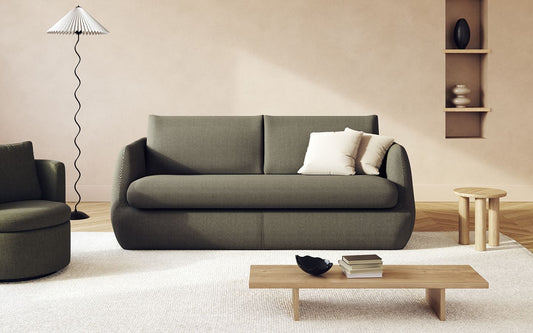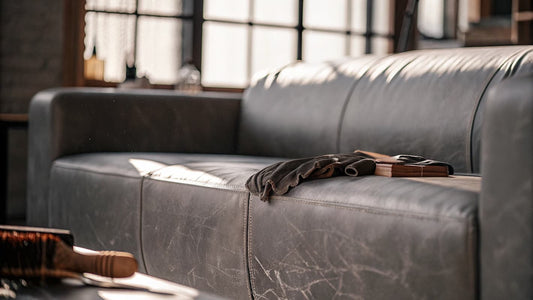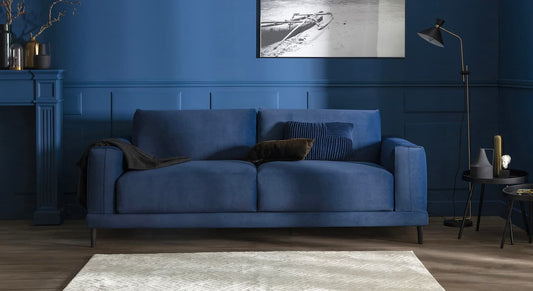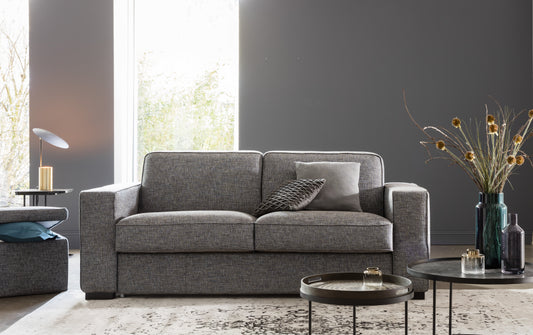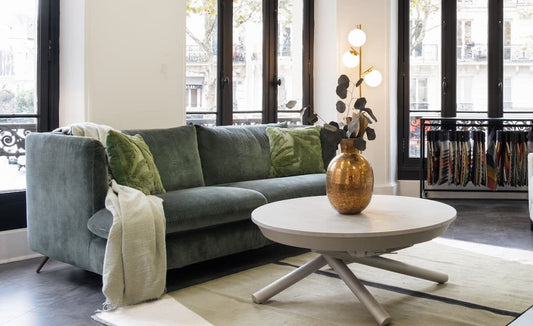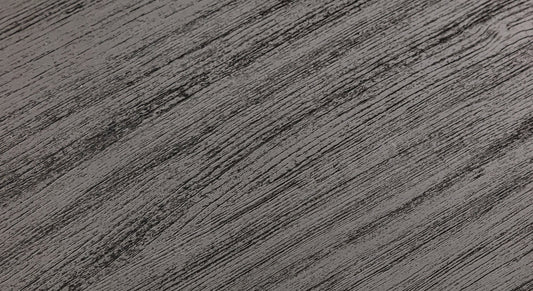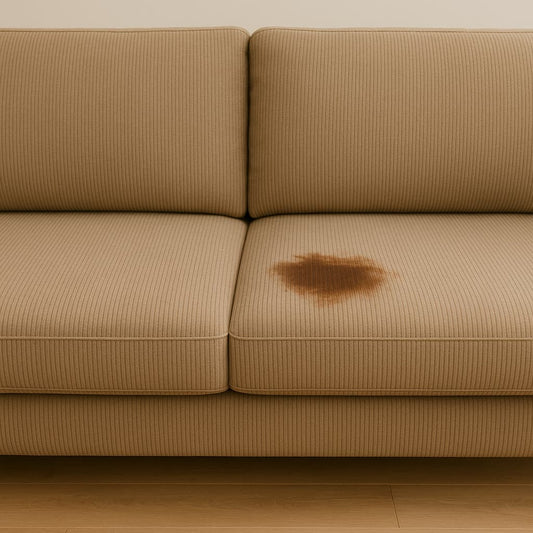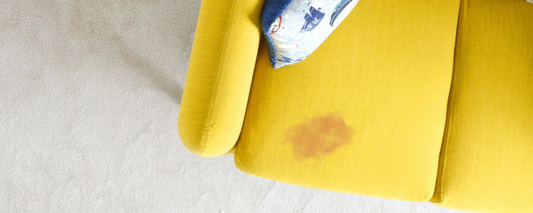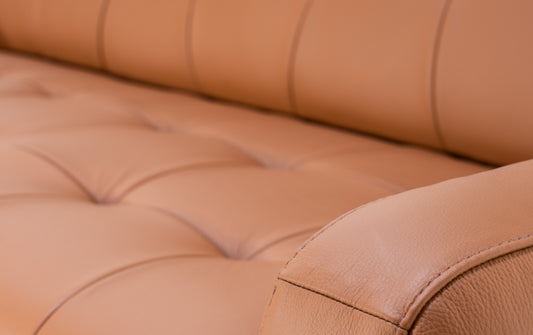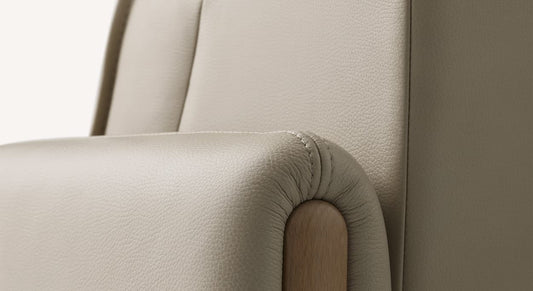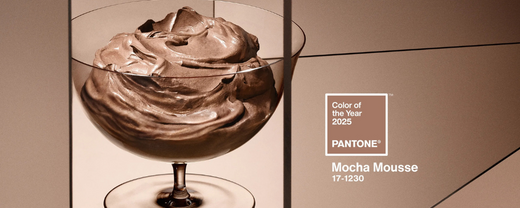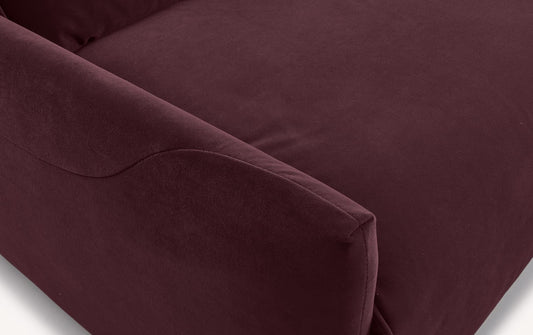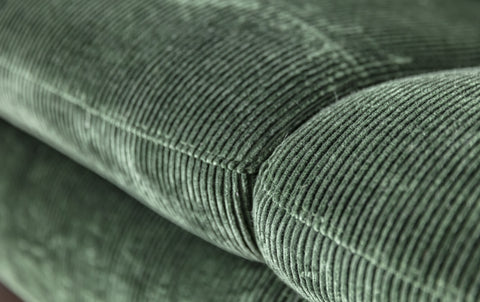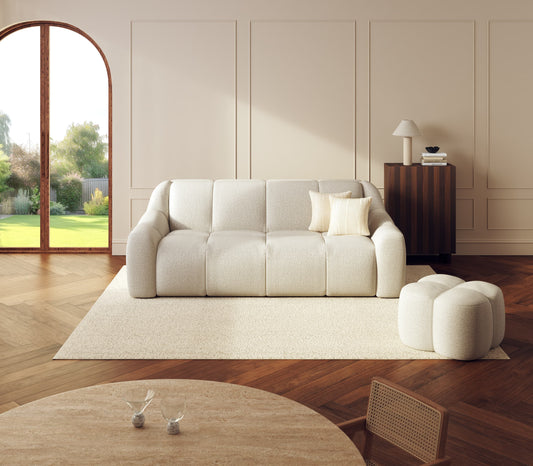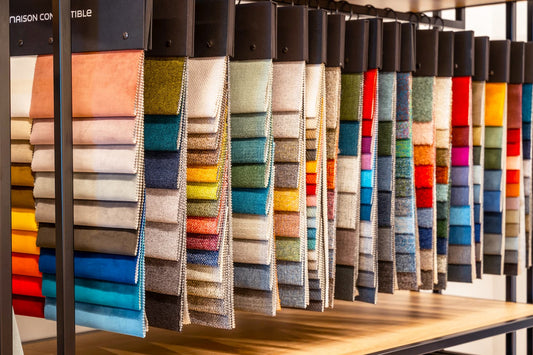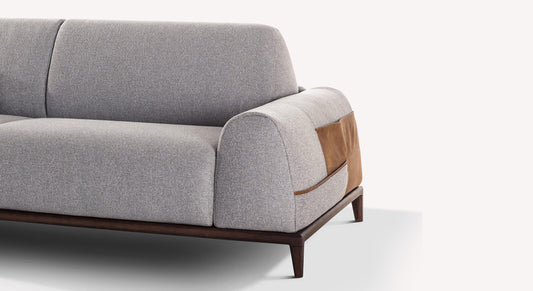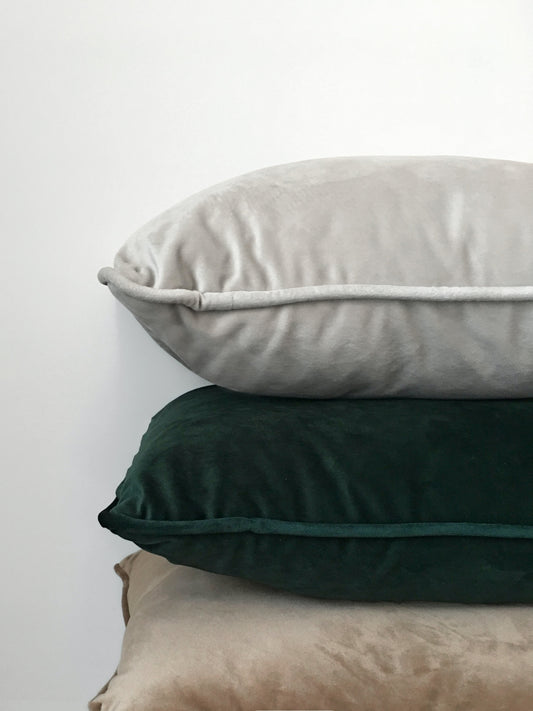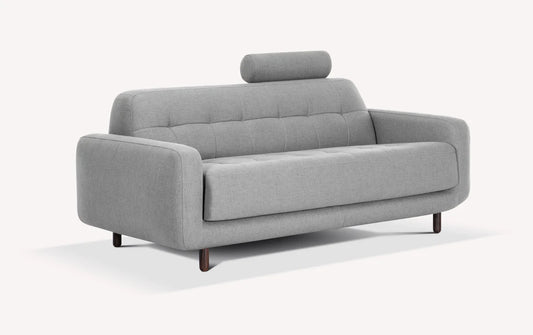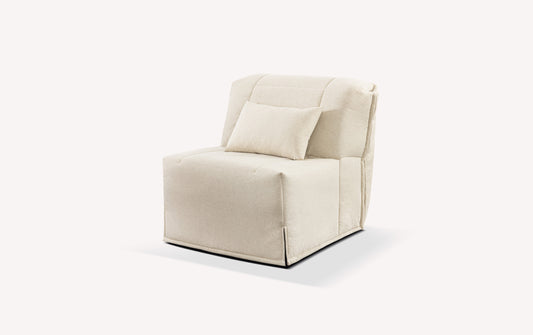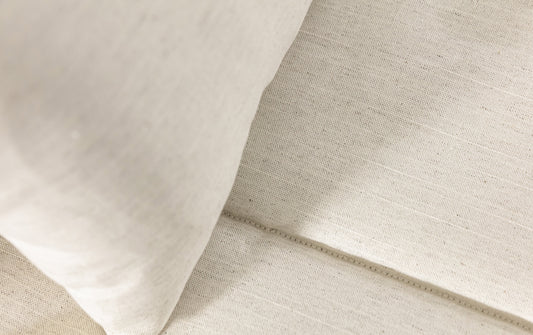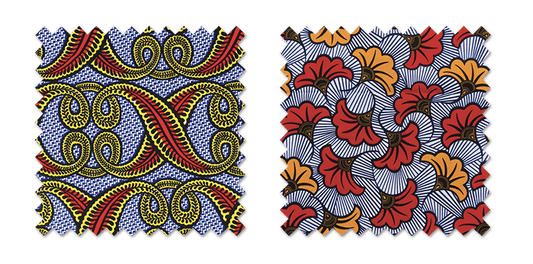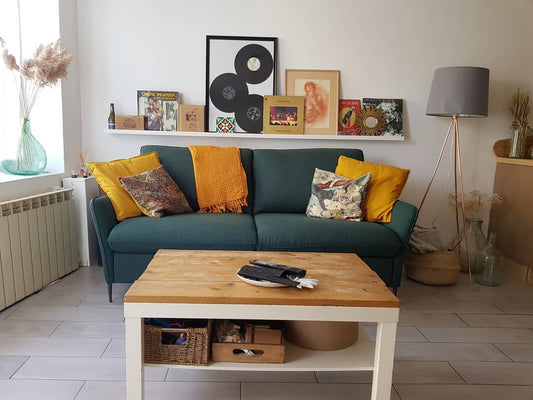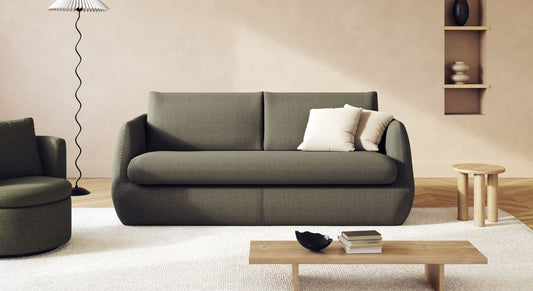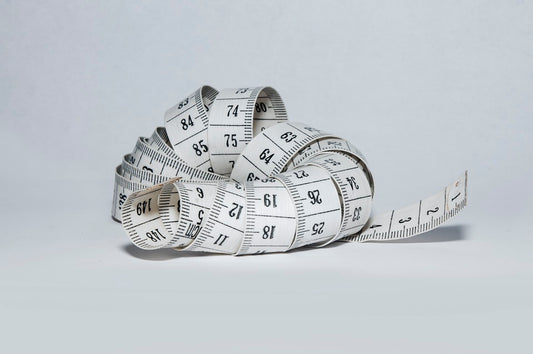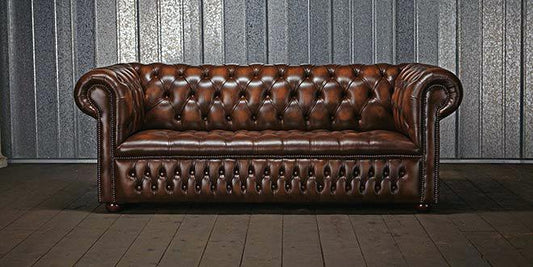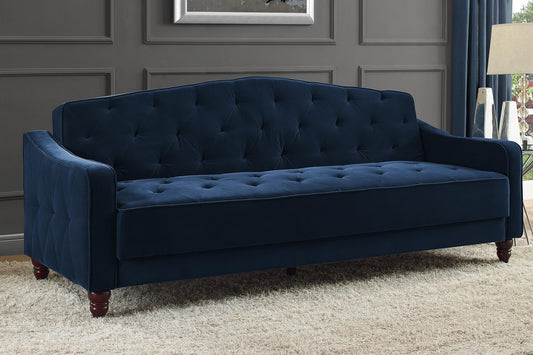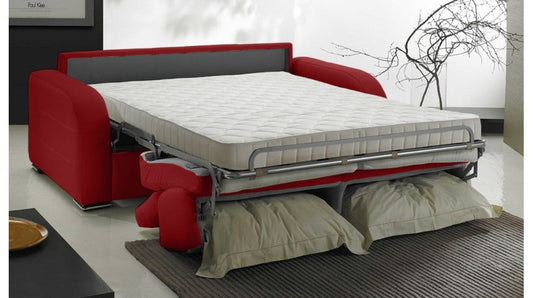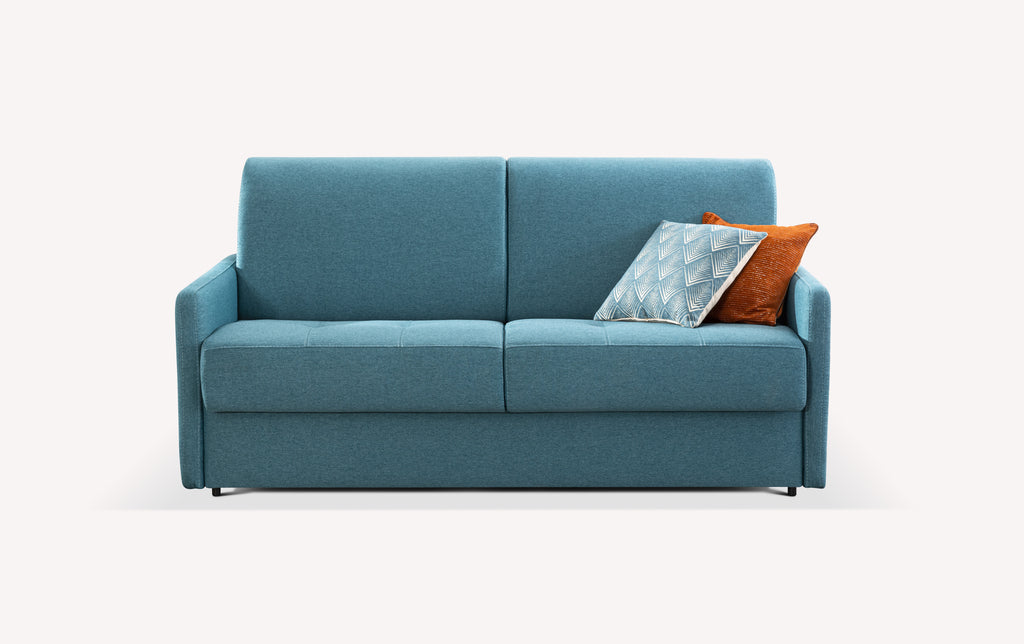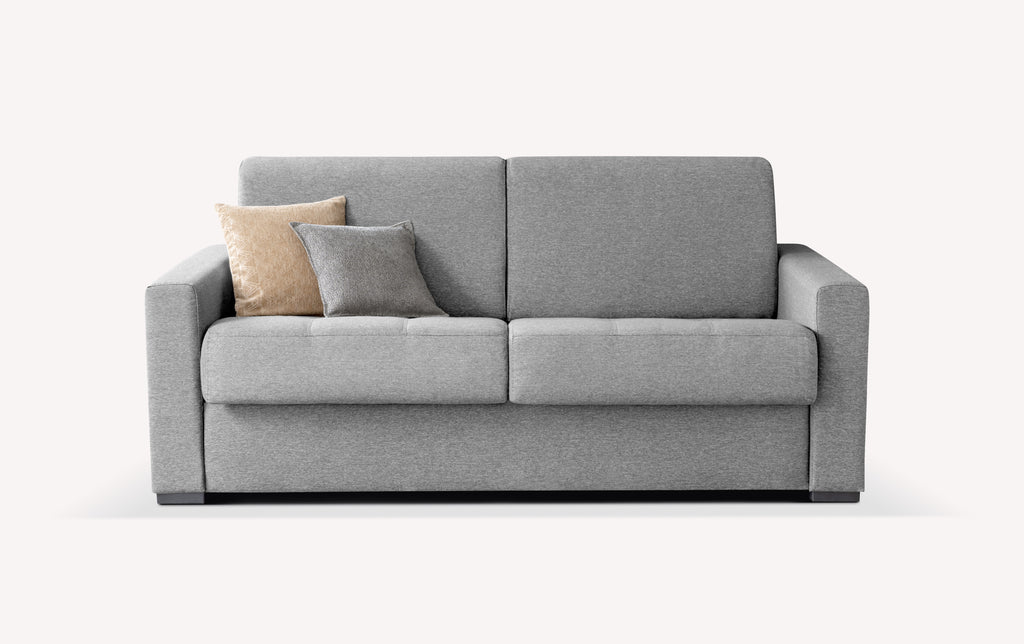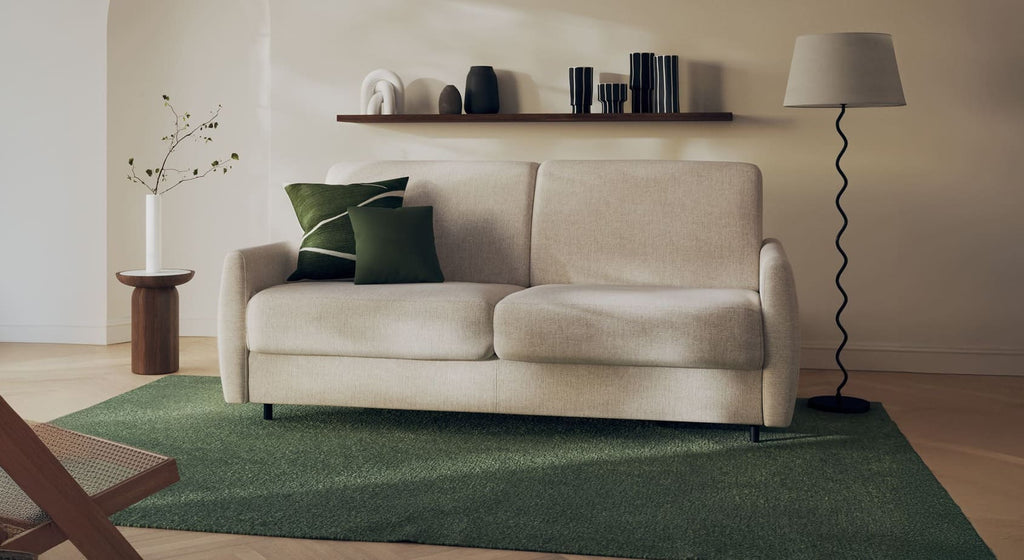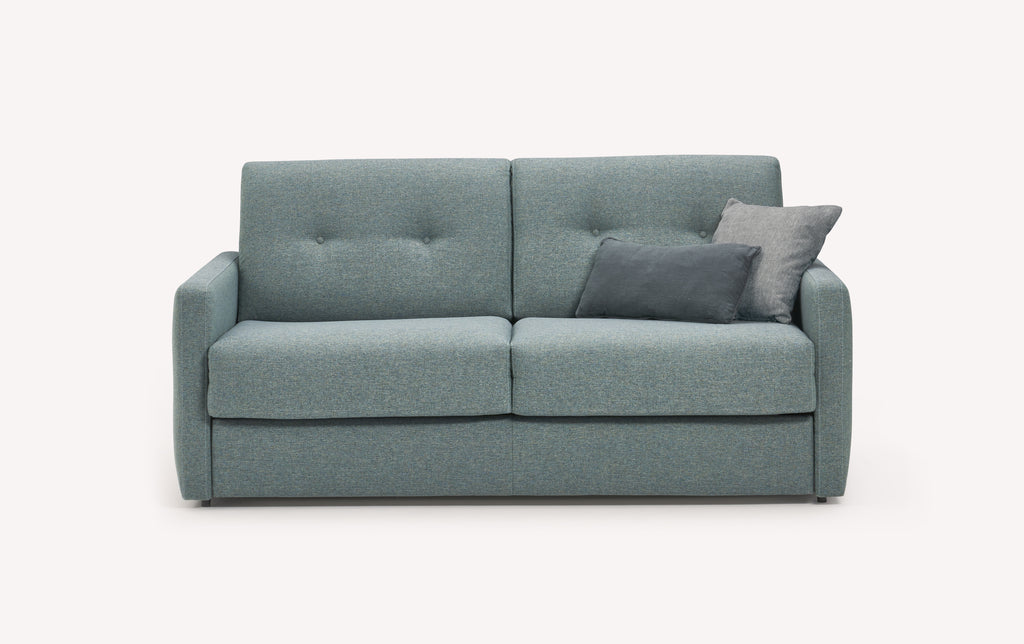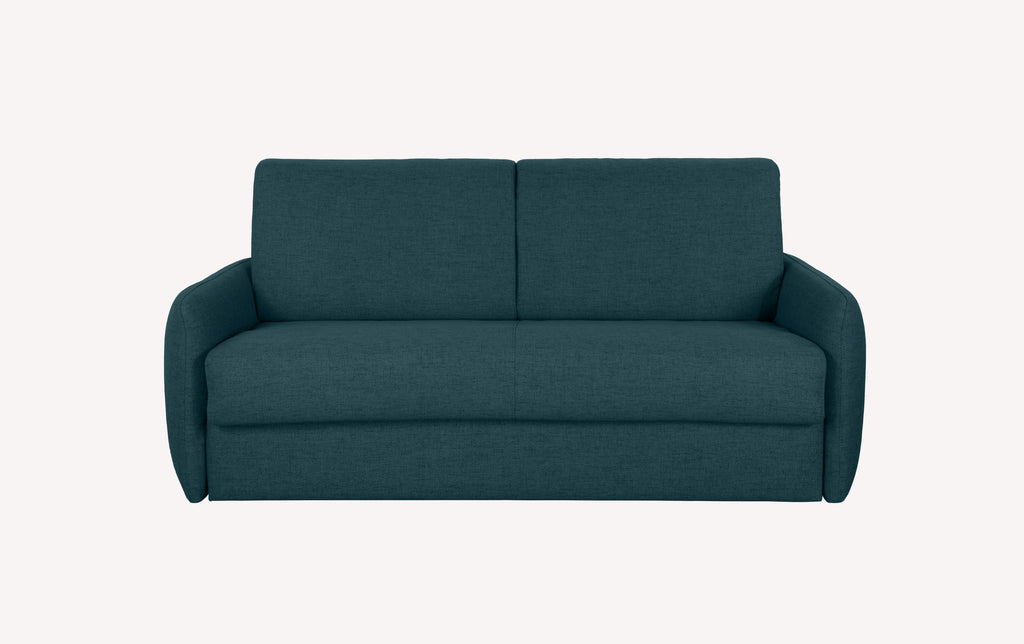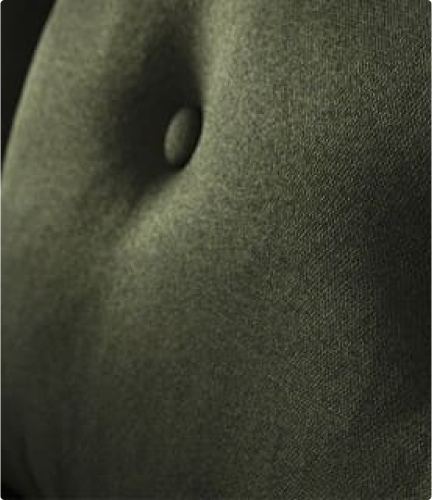- Why choose a microfiber sofa?
- Cleaning codes (W, S, WS, X): Check manufacturer's instructions before starting
- Essential preparation before cleaning
- The Step-by-Step Guide to Cleaning a Microfiber Sofa
- Cleaning techniques according to the type of microfiber on your sofa
- Natural solutions for cleaning microfiber
- What to do about stubborn stains?
- How to remove specific stains from microfiber?
- How to treat bad smells from your sofa?
- Special case: removable microfiber covers
- Protection and preventive maintenance of the fabric
- What products should you absolutely avoid for your microfiber sofa?
A microfiber sofa is an ideal solution for combining comfort and aesthetics in your home. Thanks to its pleasant appearance and renowned durability, this upholstery is highly prized in modern living rooms. However, like any fabric furniture, it requires regular maintenance to preserve its beauty and durability. Discover the best techniques for cleaning a sofa bed or microfiber sofa easily and effectively through this comprehensive guide.

Why choose a microfiber sofa?
The different types of microfiber (leather effect, technical, stain-resistant)
Microfiber comes in several forms to meet all needs in terms of aesthetics and functionality:
- Leather effect : The imitation leather microfiber provides a feel similar to real leather while offering better resistance to scratches and wear marks.
- Technical : Designed for intensive use, it is particularly resistant to repeated rubbing, making it ideal for large families.
- Stain resistant : This type of fabric has a specific treatment that facilitates stain removal and greatly simplifies the cleaning process.
The advantages of microfiber fabric: resistance to all tests and easy maintenance
Choosing a microfiber sofa or sofa bed has many advantages. First, this material stands out for its great durability against everyday tears, wear, and stains. Unlike some delicate textiles, microfiber is highly resistant to scratches and retains its original appearance for a long time. In addition, its maintenance is relatively simple , requiring only a few specific products . Regular cleaning is generally enough to keep your sofa in perfect condition.
Why does microfiber require special cleaning?
Despite its durability, microfiber requires special cleaning techniques . Using the wrong technique or the wrong product could permanently damage its appearance. For example, too much water or abrasive products can damage its delicate fibers and cause unsightly stains. That's why it's essential to know the right methods for cleaning a microfiber sofa to ensure its longevity without risking damage.
Cleaning codes (W, S, WS, X): Check manufacturer's instructions before starting
Before taking any action, it is essential to consult the manufacturer's label indicating the appropriate cleaning code for your microfiber sofa :
- W : means you can use water -based solutions for cleaning.
- S : Indicates that only dry solvents are recommended to avoid stains or marks.
- WS : allows the use of water or solvents, offering more flexibility in the products to choose.
- X : Requires professional cleaning only, without liquid products or water .
This quick check is essential to avoid any irreversible damage to your sofa.
Essential preparation before cleaning
Before you start cleaning a microfiber sofa , careful preparation is required:
- Vacuum the entire sofa to remove dust, crumbs and debris.
- Always test cleaning products on a small, inconspicuous area of the fabric to check compatibility.
- Protect surrounding areas, such as decorative cushions, by removing them before you begin.
This preparation optimizes the cleaning result while protecting your furniture.

The Step-by-Step Guide to Cleaning a Microfiber Sofa
Step 1: Surface cleaning and dusting the sofa
Start by thoroughly vacuuming the entire surface of the sofa with a soft brush attachment. Pay particular attention to seams, corners, and folds to completely remove any embedded dust.
Step 2: Treating Fresh Stains on Fabric
Act quickly on recent stains to prevent them from penetrating deep into the microfiber . Here are some effective solutions :
- For greasy stains, gently apply baking soda , let it absorb and then vacuum.
- For liquids like coffee or juice, dab with a damp cloth lightly dampened with a mixture of water and white vinegar .
Step 3: General cleaning of the sofa
For a deeper cleaning, prepare a mild solution :
- Mix a few drops of mild soap or dish soap with warm water .
- Lightly soak a clean cloth with this mixture.
- Gently rub the sofa using circular motions to clean thoroughly without damaging the fibers .
This technique allows for even and gentle cleaning of the entire sofa.
Step 4: Drying the material and finishing
Drying is a crucial step after cleaning a microfiber sofa :
- Use a dry cloth to absorb any remaining moisture.
- Gently brush the fabric with a soft brush to restore its original appearance.
- Allow to air dry completely, away from direct sunlight to preserve color .
With these steps, your microfiber sofa will regain its original appearance, clean and pleasant to the touch.
Cleaning techniques according to the type of microfiber on your sofa
Each microfiber sofa requires a specific approach based on its specific characteristics. Cleaning codes (W, S, WS) guide you toward the appropriate methods to avoid any damage to the fabric . Here's how to clean a microfiber sofa according to the manufacturer's recommendations.
Cleaning with soapy water (code W and WS)
For sofas with codes W or WS, cleaning with soapy water is ideal:
- Mix a few drops of mild soap with warm water.
- Lightly dampen a clean cloth with this solution .
- Clean gently using circular motions.
- Rinse with a damp cloth then dry immediately with a dry cloth.
This simple method allows regular maintenance without risk of damaging the fiber .
Cleaning with solvents (code S and WS)
If your microfiber sofa displays the S or WS code, use specific solvents for delicate fabrics:
- Apply the solvent to a clean cloth, remember to use gloves!
- Always test on an inconspicuous area to verify compatibility.
- Gently rub the stain without soaking the fabric .
- Let air dry.
Solvents are particularly suitable for greasy or oily stains and prevent streaks.
Stain-resistant fiber: specific techniques
Stain-resistant sofas have a specific protective treatment that makes cleaning easier:
-
If stained, dab immediately with a clean cloth.
-
Use only mild products, ideally clear water.
-
If necessary, add mild soap to enhance the action.
Following these techniques will ensure the treatment remains effective over the long term.

Natural solutions for cleaning microfiber
Marseille soap for gentle cleaning
Marseille soap is ideal for delicate maintenance of your microfiber sofa:
-
Dilute a few soap flakes in warm water.
-
Use a soft sponge to clean the surface without over-wetting.
-
Rinse gently and allow to air dry.
White vinegar: effectiveness and precautions
White vinegar cleans effectively and eliminates bad odors:
-
Mix a small amount of white vinegar with warm water.
-
Lightly dampen a soft cloth with this solution.
-
Gently dab the stain, then let it dry naturally.
Avoid using pure vinegar to avoid the risk of discoloring the microfiber.
Baking soda to deodorize and revive
To freshen and neutralize odors, sprinkle baking soda over the entire sofa:
-
Leave to act for at least 30 minutes , or even overnight for very impregnated fabrics.
-
Vacuum carefully using a suitable nozzle.
This method naturally deodorizes while revitalizing the fabric without damaging it. It can also be applied to an armchair or cushions.

What to do about stubborn stains?
70° alcohol for grease and ink stains
70° alcohol is particularly effective on grease, ink or makeup stains:
-
Soak a clean cloth with a small amount of alcohol.
-
Gently dab the stained area, without rubbing to avoid spreading the stain.
-
Dry with a clean, dry cloth.
Always test on an inconspicuous area first.
Soda crystals for deep cleaning
For stubborn stains or extensive soiling:
-
Dilute a tablespoon of soda crystals in a liter of hot water.
-
Use a clean sponge lightly dampened with the solution.
-
Dab the stain, avoiding soaking the fabric, then let it air dry.
Soda crystals effectively degrease and sanitize without damaging the fibers if they are used in the right dosage.
Steam Cleaning: Benefits and Precautions
Steam cleaning is convenient and quick, but requires caution:
-
Set to low temperature.
-
Do not hold the device on the same spot for too long.
-
Allow to dry completely before reusing the sofa.
How to remove specific stains from microfiber?
Liquid stains (coffee, wine, juice)
When dealing with spilled liquid, quick action is key. Start by gently dabbing the area with a paper towel , without rubbing. Once the excess is removed, clean the stain with a mixture of warm water and mild soap . Apply with a clean cloth using gentle circular motions, then let it air dry.
Grease and food stains
Grease stains require prompt attention. Baking soda is particularly effective: sprinkle it directly onto the stain and let it sit for at least half an hour. Once the grease has been absorbed, vacuum thoroughly, then wipe with a clean, slightly damp cloth to remove any remaining residue.
Ink and dye stains
When dealing with ink stains, use 70% alcohol with caution. Soak a soft cloth and dab the affected area without spreading it too much. This technique gradually dissolves the pigments. Once the stain has faded, rinse lightly with a damp cloth, then dry thoroughly with a clean cloth.
How to prevent and treat halos?
Stains often appear when an area is cleaned partially or unevenly. To avoid this, it is important to moisten the entire area around the stain , even if it is localized. Once cleaned, be sure to dry the entire area thoroughly by patting with a clean cloth to even out the fabric.
How to treat bad smells from your sofa?
Baking soda is a simple and natural solution for eliminating odors. Simply spread a thin layer over the entire sofa and let it sit for several hours. Then, vacuum to completely remove the powder. If odors persist, opt for a gentle disinfectant fabric spray formulated without harsh chemicals.

Special case: removable microfiber covers
If your sofa has washable covers, remove them carefully and machine wash them at a low temperature, ideally at 30°C on a delicate cycle . Drying should be done in the open air, in the shade, to avoid altering the color or texture. Make sure the covers are completely dry before replacing them to avoid any moisture or mold growth.
Protection and preventive maintenance of the fabric
Protecting your microfiber sofa is a simple but essential step. Regularly applying a special protective spray helps strengthen the fabric's waterproofing and repel stains. To maintain the upholstery's shine, avoid prolonged exposure to sunlight, which can dull the color . General maintenance every three to six months is enough to keep your sofa clean and welcoming.
What products should you absolutely avoid for your microfiber sofa?
Certain products should be avoided if you want to maintain the appearance and durability of your sofa. Bleach, strong solvents, and any harsh chemicals can irreparably damage the fibers . Likewise, it's best to avoid hard brushes, which can scratch or wear out the fabric. Finally, never saturate the upholstery with water or cleaning solution: excess moisture can penetrate deep inside and cause stains or mold.
Knowing exactly how to clean a microfiber sofa is essential to maintaining its appearance and comfort. Always follow the manufacturer's instructions and opt for natural methods for optimal, long-lasting results.
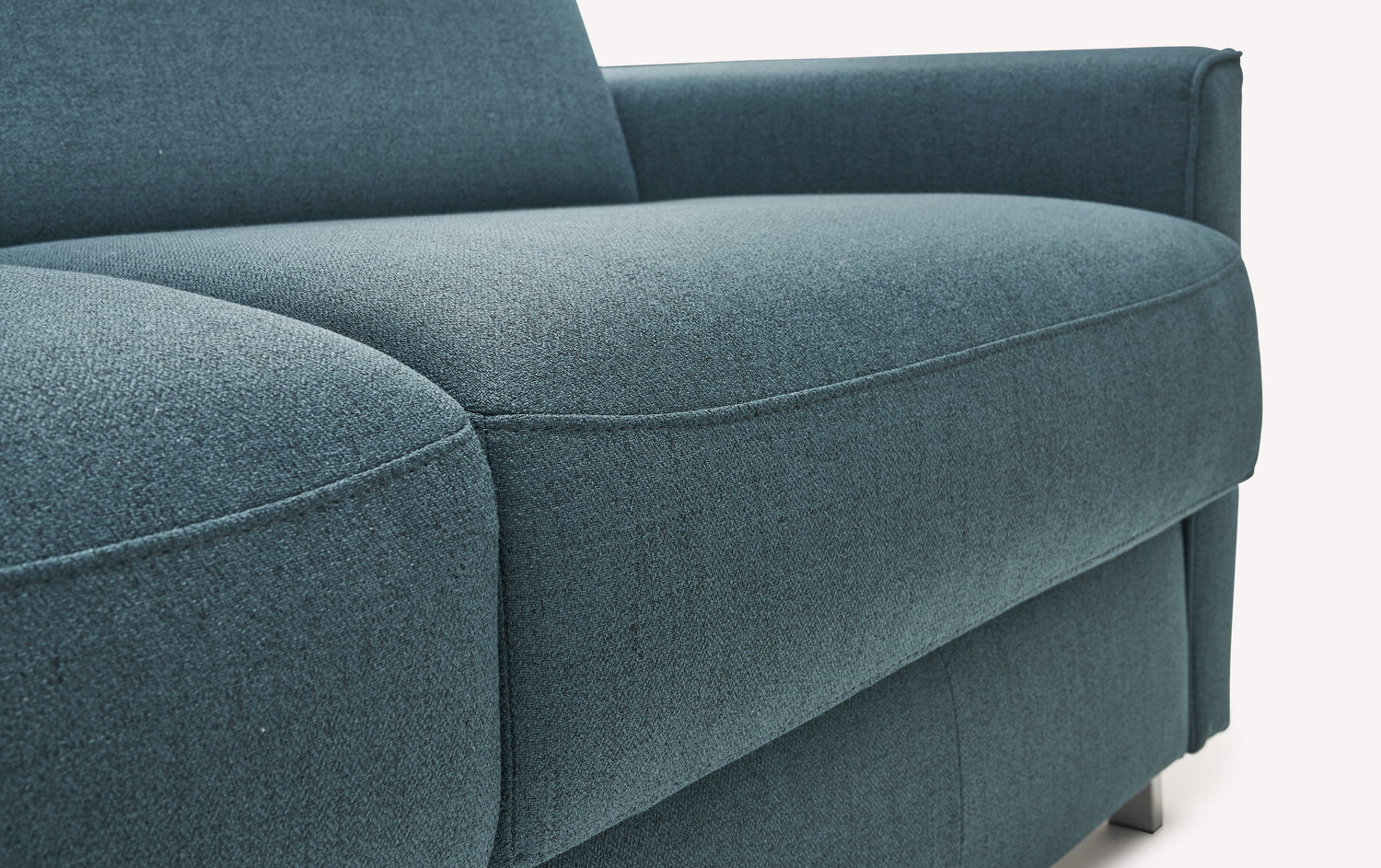

 The up and down coffee table: practical on a daily basis for small homes
The up and down coffee table: practical on a daily basis for small homes
 Liftable table: which design to go with my sofa?
Liftable table: which design to go with my sofa?
 Liftable coffee table: round or rectangular? Our advices
Liftable coffee table: round or rectangular? Our advices
 Quelle couleur associer avec votre canapé vert foncé ?
Quelle couleur associer avec votre canapé vert foncé ?
 BZ or Futon sofa bed – How to choose the right bench seat?
BZ or Futon sofa bed – How to choose the right bench seat?
 Idées et conseils pour décorer un salon avec un canapé noir
Idées et conseils pour décorer un salon avec un canapé noir
